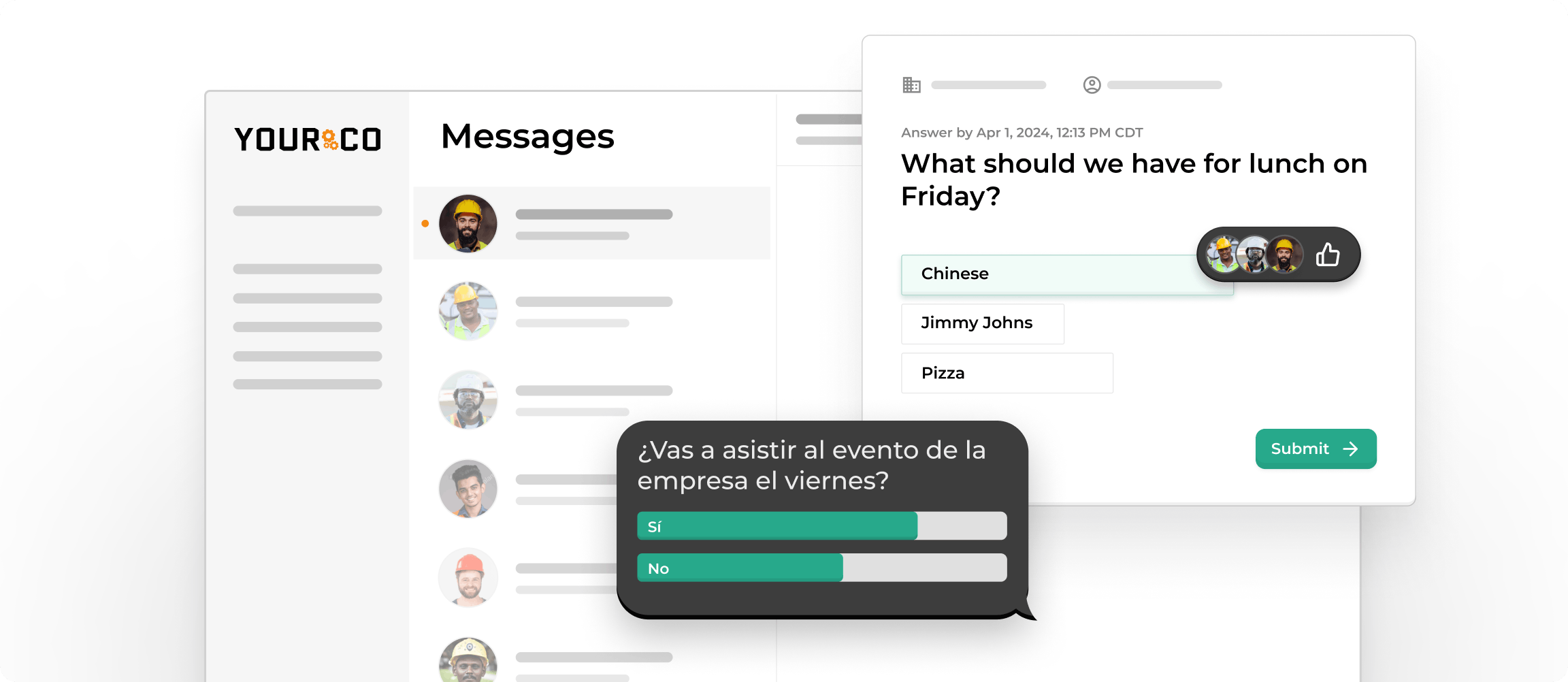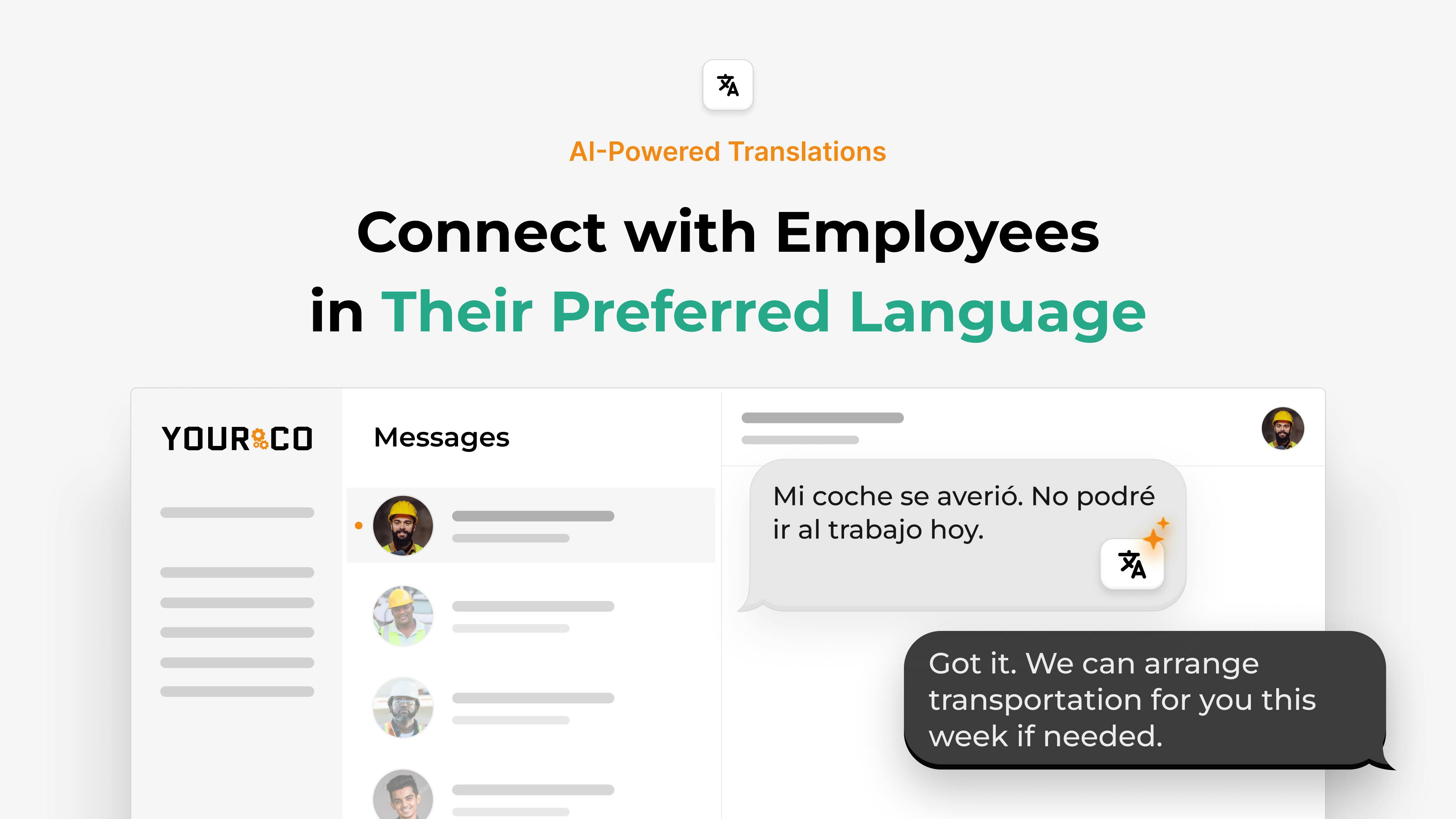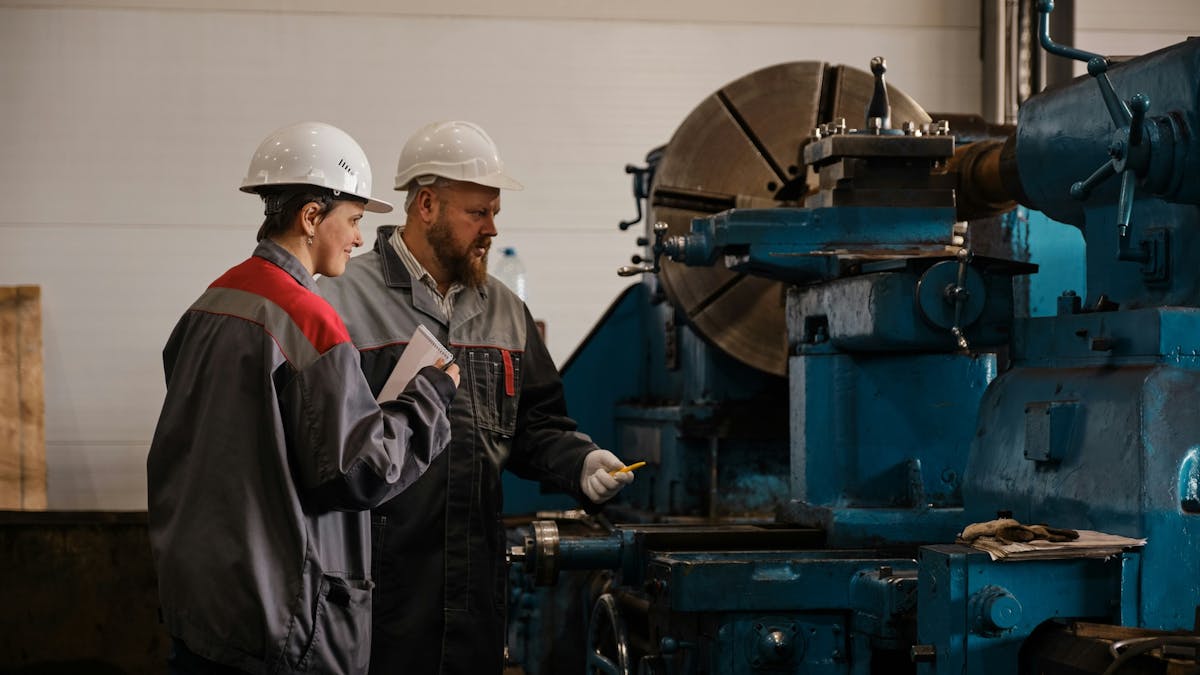Build a Team That Stays: Proven Retention Strategies for Every Industry


Your best employees shouldn't feel like they're constantly looking for the exit. In today's competitive job market, keeping talented workers means more than just offering a paycheck — it requires creating an environment where people genuinely want to build their careers.
When you get retention right, you save thousands in hiring costs, keep valuable knowledge in-house, and build the kind of team chemistry that drives real results. The companies that master this approach turn their people into their biggest competitive advantage.
Understand Why Good People Leave
When talented employees start walking out the door, it's rarely about one bad day. Most departures trace back to deeper issues that have been building over time. In demanding industries like manufacturing, construction, and logistics, workers often cite the same core problems: feeling undervalued, seeing no path forward, or dealing with leaders who don't understand the realities of their daily work.
Low wages top the list of concerns, but it's not always about the amount. Workers notice when their pay doesn't match the market or when promised raises never materialize. A SurveyMonkey study found that 54% of HR professionals identify improved compensation as the most critical factor in retention.
However, money alone won't solve the problem. Many employees leave because of:
- No clear advancement opportunities
- Limited training
- Sense that their current role leads nowhere
- Burn out from unpredictable schedules
- Excessive overtime
- Workloads that make work-life balance impossible
Communication breakdowns also drive good people away. When workers feel like their concerns go unheard or their feedback doesn't matter, they start looking elsewhere. This is especially challenging for teams spread across multiple sites or shifts, where staying connected requires more intentional effort.
Create Momentum with Better Onboarding
First impressions set the tone for everything that follows. A warehouse worker's first week should feel welcoming and well-organized, not like they're figuring things out on their own. The best onboarding experiences combine practical training with regular check-ins to catch potential issues early.
Smart managers use feedback loops at 30, 60, and 90 days to understand how new hires are settling in. A simple survey at 30 days reveals whether training covered the essentials and if the person feels welcomed by their team. By 60 days, you can gauge ongoing support needs and identify any early engagement concerns.
The 90-day mark offers the clearest picture of long-term fit. This is when new employees have had enough time to understand their role and start forming opinions about company culture. Text-based check-ins work especially well for field workers and shift employees who might not have easy access to email during work hours.
Companies that invest in structured onboarding see measurable returns. New hires who feel supported from day one are significantly more likely to stay past the critical six-month mark.
Build Skills Through Apprenticeships and Mentoring
Workers stay when they see a future worth building. Apprenticeship programs give blue-collar employees the chance to earn while they learn, developing valuable skills without leaving the workforce. The Industrial Manufacturing Technician (IMT) apprenticeship exemplifies this approach, combining structured learning with hands-on experience.
These programs deliver tangible results for both sides. Employees gain marketable skills and clear career progression, while companies develop a more capable workforce that understands their specific processes and culture. Mentorship programs add another layer of support and development, leading to higher satisfaction and engagement.
The key is making these programs feel genuine rather than bureaucratic. When experienced workers can share knowledge naturally and new employees see clear paths for growth, everyone benefits from the investment.
Offer Fair and Competitive Compensation
Fair wages form the foundation of any retention strategy. This goes beyond offering more money — you need to ensure your compensation aligns with market realities and meets reasonable expectations. Regular compensation surveys help you understand where you stand compared to competitors.
However, competitive pay alone won't guarantee loyalty. Workers also notice how you handle compensation decisions. Transparent discussions about pay structures, regular reviews, and responsiveness to feedback build trust that extends far beyond the paycheck.
Performance bonuses can make a significant difference, especially for non-desk workers whose contributions directly impact productivity and safety. When a warehouse team hits efficiency targets or a construction crew completes a project safely and on time, recognition through bonuses reinforces the behaviors you want to see.
Benefits packages matter too, but they don't need to be complicated. Healthcare coverage, retirement contributions, and reasonable paid time off often carry more weight than elaborate perks that employees might not actually use.
Prioritize Wellness and Work-Life Balance
Burnout kills retention faster than almost any other factor. Workers who feel physically and mentally exhausted will look for relief elsewhere, even if it means taking a pay cut. Smart companies get ahead of this by building wellness into their culture rather than treating it as an afterthought.
Mental health support has become increasingly important, especially in high-stress industries. This might include counseling resources, stress management workshops, or simply creating an environment where it's okay to talk about mental health challenges.
Physical wellness matters too, particularly for labor-intensive roles. Proper safety equipment, ergonomic considerations, and reasonable work pace expectations show that you value your employees' long-term health over short-term productivity gains.
Work-life balance looks different depending on the industry, but the principle remains the same: people need time to recharge. Predictable schedules, respect for time off, and coverage systems that don't require employees to work when they're supposed to be resting all contribute to sustainable employment relationships.
Communicate Openly and Often
Strong communication builds the trust thar keeps good employees engaged. This becomes more challenging when your workforce is spread across multiple locations or working different shifts, but it's also more critical.
Simple communication methods often work best. Text messaging reaches everyone immediately, regardless of whether they're in an office, on a construction site, or driving a delivery route. When managers can send quick updates about schedule changes, safety alerts, or company news, everyone stays in the loop.
Feedback mechanisms matter just as much as information sharing. Anonymous suggestion systems give employees a safe way to raise concerns or share ideas. When leaders respond thoughtfully to feedback and implement reasonable suggestions, it demonstrates that employee input actually influences decisions.
Regular pulse surveys help managers stay connected to team sentiment, especially in environments where face-to-face interaction is limited. Quick, text-based surveys can capture feedback about working conditions, management effectiveness, or job satisfaction without requiring lengthy meetings or complicated systems.
Invest in Career Development
Career development isn't just about promotions — it's about helping people build skills that make them more valuable and engaged. This might include technical training, leadership development, tuition assistance, or cross-training opportunities that add variety to someone's role.
The most effective development programs are tailored to individual needs rather than one-size-fits-all approaches. A forklift operator might benefit from safety certification training, while a team leader could use management skills development. When employees see that you're invested in their growth, they're more likely to invest their future in your company.
Mentoring relationships create particularly strong retention effects because they combine skill development with personal connection. Whether it's experienced workers guiding newcomers or reverse mentoring that helps senior staff learn new technologies, these relationships build the kind of loyalty that's hard to replicate.
Clear advancement pathways give employees something to work toward. This doesn't mean everyone needs to become a manager, but it does mean showing how good performance leads to better opportunities, more responsibility, or increased earning potential.
Celebrate Contributions That Matter
Recognition works best when it feels personal and timely. A generic "employee of the month" program might check a box, but it won't create the emotional connection that drives retention. The most effective recognition speaks directly to what someone has accomplished and why it matters.
This could mean acknowledging a maintenance technician who prevented a costly equipment failure, celebrating a delivery driver's perfect safety record, or highlighting a team's successful completion of a challenging project. The key is being specific about the impact and making sure the recognition reaches not just the individual but their peers as well.
Personalized rewards resonate more than standard gifts. A gift card to someone's favorite restaurant or tickets to a local sporting event they follow show that you pay attention to them as individuals. For workers who report safety incidents or suggest process improvements, quick acknowledgment via text can reinforce the behaviors you want to encourage.
Build an Inclusive Culture
An inclusive workplace is about creating an environment where different perspectives are valued and every voice can be heard. This becomes especially important in industries that have traditionally struggled with inclusion.
Anonymous reporting systems allow employees to raise concerns about discrimination or bias without fear of retaliation. When managers respond quickly and fairly to these reports, it builds trust across the entire team. Cross-cultural mentoring programs can also help bridge differences and create stronger working relationships.
For teams that speak multiple languages, providing important communications in workers' preferred languages shows respect and ensures everyone can participate fully. This is particularly important for safety communications, policy updates, and recognition programs.
Streamline Connectivity with Technology
The right technology makes retention strategies more effective by ensuring everyone stays connected and informed. For non-desk workers, this often means communication tools that work on mobile devices and don't require computer access.
Text messaging platforms (such as Yourco) designed for workplace communication can bridge the gap between management and field workers. When a supervisor can quickly share schedule updates, safety reminders, or recognition messages, it creates a more inclusive and responsive work environment.
These tools also enable real-time feedback collection through simple surveys or polls. Instead of waiting for annual reviews, managers can check in regularly with their teams and address concerns before they become retention problems.
The key is choosing technology that enhances rather than complicates communication. The best platforms require minimal training and work reliably across different devices and network conditions.
Establish Trust Through Consistency
Retaining good employees ultimately comes down to building trust through consistent actions over time. When workers know they can count on fair treatment, honest communication, and genuine investment in their success, they're much more likely to build their careers with your organization.
This means following through on commitments, whether that's implementing suggested improvements, providing promised training, or maintaining competitive compensation. It also means being transparent about challenges and involving employees in finding solutions rather than making unilateral decisions that affect their work lives.
Regular check-ins, both formal and informal, help maintain these relationships. For distributed teams, this might mean scheduled text-based surveys, brief phone calls, or periodic on-site visits that show management's ongoing commitment to each location and team.
Transform Communication and Boost Retention with Yourco
Effective retention strategies require the right communication tools to succeed. When your team is spread across multiple locations or working non-traditional schedules, staying connected becomes both more challenging and more important.
Yourco's SMS-based platform helps you implement many of these retention strategies more effectively. Send instant updates about schedule changes, conduct quick pulse surveys to gather feedback, recognize achievements in real-time, and ensure safety communications reach everyone immediately. With support for over 135 languages and dialects, every team member can participate fully, regardless of their preferred language.
For managers dealing with shift workers, field teams, or multi-location operations, having a direct line of communication that doesn't require email or app downloads makes all the difference. When employees feel informed, valued, and connected to their organization, they're significantly more likely to stay and build their careers with you.
Try Yourco for free today or schedule a demo and see the difference the right workplace communication solution can make in your company.
Frequently Asked Questions
How quickly should I expect to see retention improvements after implementing these strategies?
Some changes, like improved communication and recognition, can show impact within 30-90 days. Deeper cultural changes and career development programs typically take 6-12 months to significantly influence retention rates.
Which retention strategy delivers the biggest impact for non-desk workers?
Consistent, accessible communication combined with fair compensation tends to have the most immediate impact. When workers feel informed and fairly compensated, other retention strategies become more effective.
How can I measure whether my retention strategies are working?
Track both turnover rates and employee satisfaction scores through regular surveys. Exit interviews also provide valuable insights into why people still choose to leave despite your retention efforts.
What's the most cost-effective way to improve retention for small companies?
Focus on communication and recognition first—these require more intention than investment. Simple text-based feedback systems and personalized recognition can deliver significant returns without major budget increases.
How do I handle retention strategies across multiple locations or shifts?
Consistent communication tools that work across all locations are essential. SMS-based platforms, such as Yourco, ensure everyone receives the same information regardless of their location or work schedule, making company-wide retention strategies more effective.




